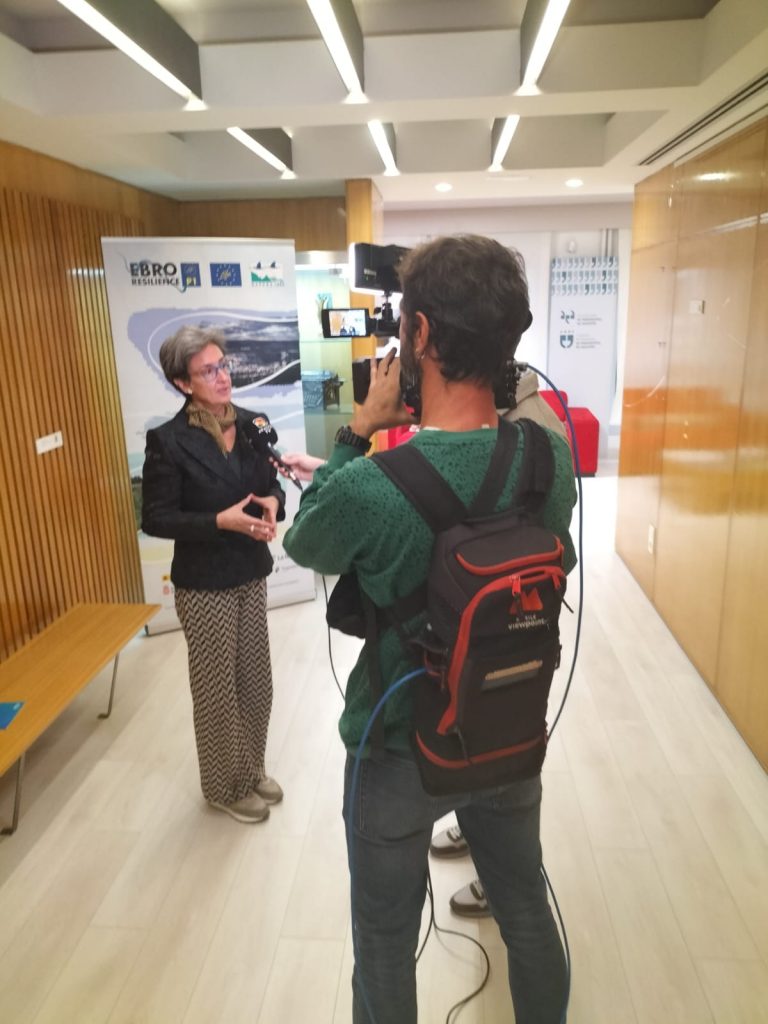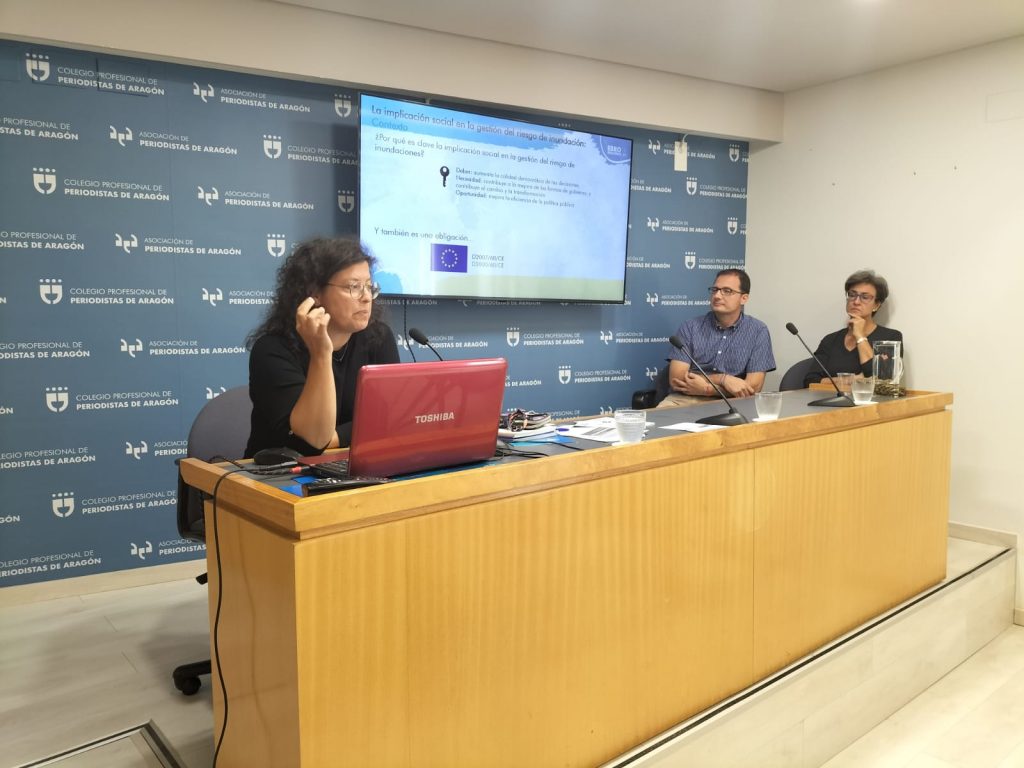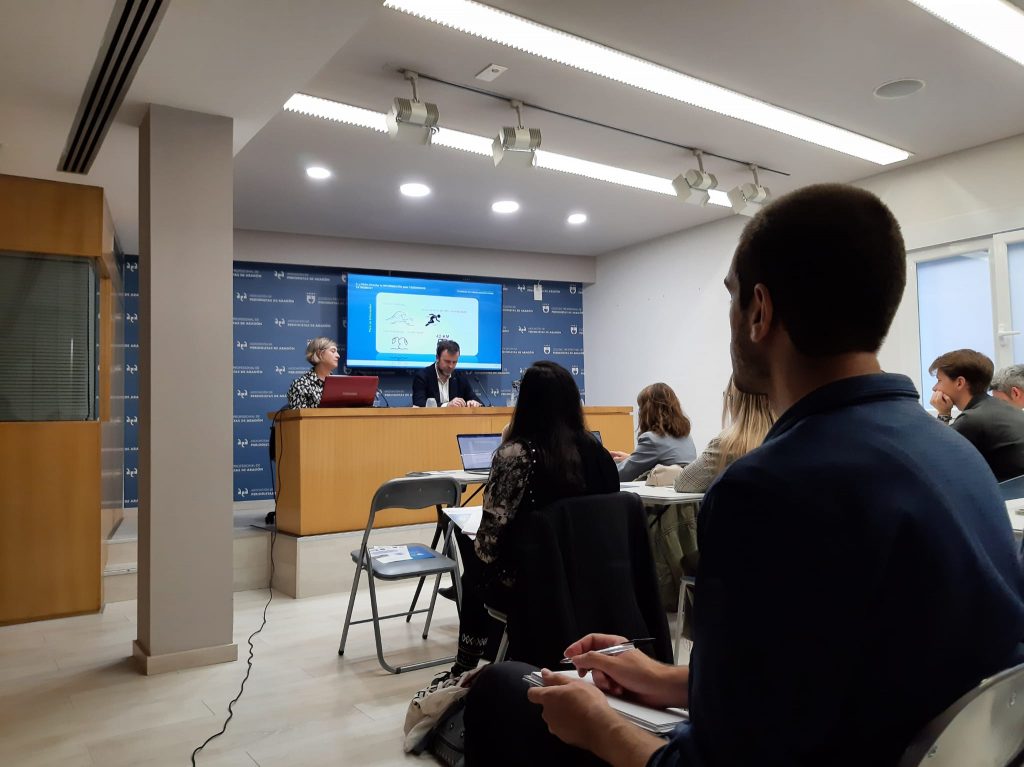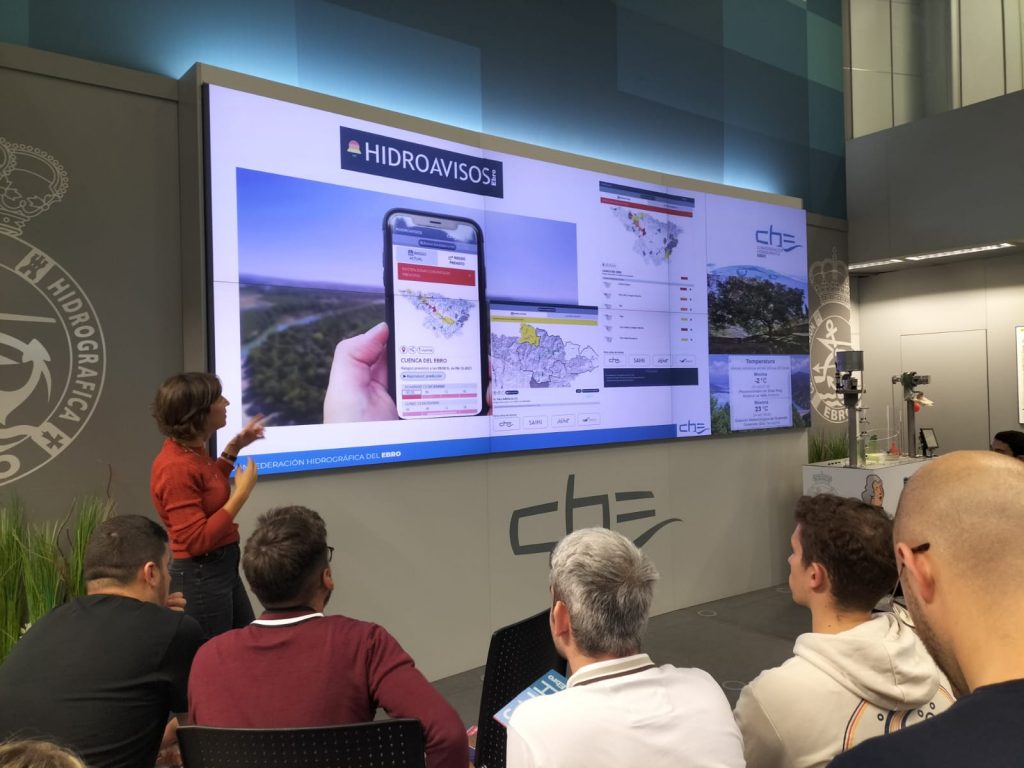The LIFE Ebro Resilience P1 project team participated last October 25 in the training day “Information in the face of extreme hydrological phenomena”, aimed at journalism students and active journalists in Aragon. There we explained the Project, its objectives and actions and made available to the participants data and documentation on floods in the Ebro basin.
Journalists, current and future, well trained, knowledgeable about sources and tools, are crucial to increase the population’s knowledge of these phenomena. They are key to strengthening social capacities and, ultimately, to help prevent, prepare for and protect against floods and droughts.
This conference is part of the dissemination program of the Flood Risk Management Plan of the Ebro Demarcation (PGRIEbro) and was organized by the Ebro Hydrographic Confederation (CHE), with the collaboration of LIFE Ebro Resilience P1, San Jorge University, the University of Zaragoza and the Professional Association of Journalists of Aragon, which provided its press center for the event.



Content
In this session, the director of the Degree in Journalism at the University of San Jorge, José Juan Verón, the journalist of TRAGSATEC and responsible for communication in the Ebro Resilience Project, María Mohedano and the data journalist of Diario.es Victòria Oliveres, discussed good journalistic practices when reporting on extreme events, talked about sources of information and the social responsibility of journalists when dealing with information that can safeguard the lives of people.
On the other hand, in a more technical block, participated the head of Hydrology of the CHE and director of PGRIEbro, María Luisa Moreno; the technical coordinator of the LIFE Ebro Resilience P1 project and CHE technician, David Gargantilla and the person in charge of the participation plan and conflict transformation actions of the LIFE Project, Alba Ballester.
The day ended with a visit to the control center of the Automatic Hydrological Information System of the CHE, the SAIHEbro, where it was possible to learn about the operation of the hydrological monitoring network and the modeling that is performed for the development of hydrological forecasts in the Ebro basin.
